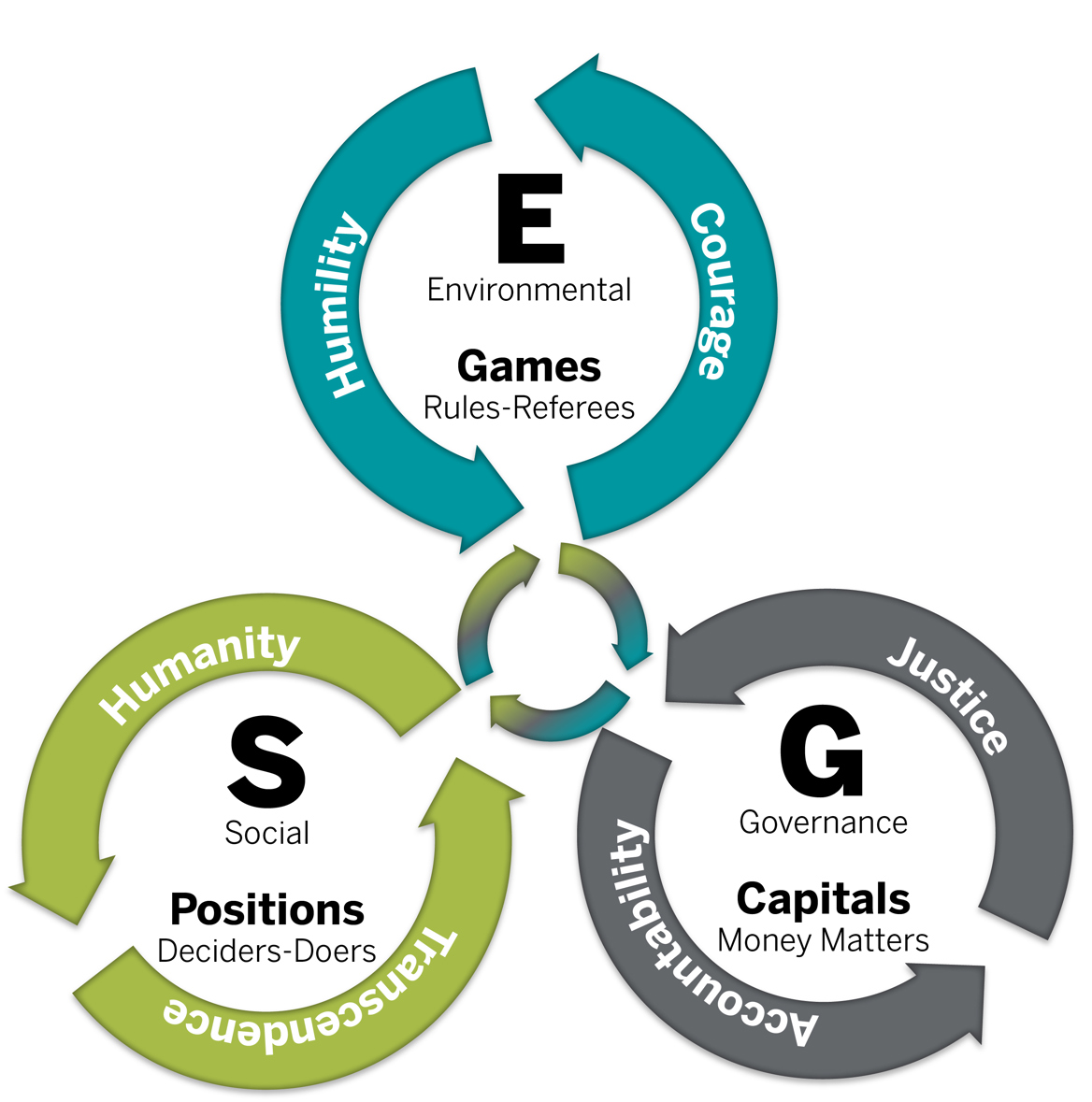If there’s one acronym that has corporate leaders worldwide pulling at their collars, it’s ESG (Environmental, Social, and Governance).
Larry Fink, CEO of BlackRock, described it as “unfortunately politicized [and] weaponized,” warning that its mere mention could hurt one’s bottom line: “We lost $4 billion because of 90 per cent misinformation.” He is not alone. Many leaders now view ESG declarations as too risky. Some refer to ESG as “a dirty word” or liken it to “a minefield”. As the controversy surrounding the term rises, so does the pressure responsible leaders face.
Recently, executives from diverse sectors convened in three North Atlantic Roundtables in Toronto, New York City, and London, U.K. (see Roundtable Synopsis), hosted by the Ian O. Ihnatowycz Institute for Leadership in partnership with The Long Run Institute, to discuss how leadership character intersects with ESG perspectives, approaches, and initiatives.
One key insight that emerged on “how to E, S and G” in today’s fraught environment was leaders “tripling down” on character to steward their stakeholders’ core values.
Character-Infused ESG
Although "character" may mean different things to different people, the roundtables adopted Ihnatowycz Leadership’s comprehensive definition. This framework includes 11 interconnected dimensions: integrity, accountability, drive, collaboration, humility, humanity, courage, transcendence, temperance, justice, and judgment. Their research reveals that individuals with strength of character make better decisions and are equipped to lead others and manage organizations effectively – regardless of present-day challenges – including critical issues.
What emerged organically from the roundtables were three distinct ways leaders spoke about environmental, social and governance commitments. Instead of referencing any part of the acronym, participants used three simple character-infused analogies. Each of these analogies enabled leaders to take an integrative rather than oppositional approach by engaging in “both/and” thinking, whereby intertwining courage with humility for E, transcendence with humanity for S, and accountability with justice for G (see below figure for a framework of Character-Infused ESG).

Character-Infused ESG Framework
How to E, S, G
- Games (referees-rules):
Some leaders view ESG as a game with either tough or absent referees and slowly evolving rules. However, they emphasize the importance of playing by today’s rules, even if imperfect, to improve tomorrow’s game.
Existing rules of the game often fall behind environmental, social or governance priorities. Leaders who approach ESG strategies through this lens respect the existing rules, even when these may still be unclear or even unfavourable. But why would leaders choose to suffer the short-term pain of not yet good enough rules? For the sake of bettering the game in the long term! If leaders don’t take the game seriously enough to play it, they cannot take part in improving its quality and integrity. By working together, leaders can smarten and tighten the rules of the game.
This lens prepares leaders to accept these imperfect rules while collaborating with competitors to improve them.
- Positions (deciders-doers):
Many critical issues are rife with hidden inhumanities. This perspective highlights the social divide between those who make and those who execute decisions. Leaders focusing on this lens aim to create a more equitable future by redefining power dynamics, leaving behind the “few in charge” paradigm that has seen consequential decisions residing in limited hands. They seek to transform exploitative relationships into more inclusive ones.
Change begins with those in power and takes deliberate action to build a more human-centered, equitable and inclusive future.
Leaders who adopt this lens build stronger bridges between those who decide and those who do, acknowledging that a future can only be forged through close collaboration between deciders and doers.
- Capitals (money matters):
Making money requires a diversity of capitals. For too long, however, the management and distribution of capitals has become singularly focused on financial capital: money, that is. The ESG backlash brings profits further to the fore, fading all other capitals further to the background. Like Larry Fink, when they fear pressure on the bottom line, many leaders “greenhush”: they speak profit and silence ESG.
Leaders embracing this lens ask critical questions about who benefits from current structures and strive to create more just and sustainable models of value creation. They also recognize the need for a deeper understanding of how capital structures impact society.
So what
Regardless of whether today’s leaders speak or silence any part of the acronym, leader character offers an essential compass to navigate through the ESG storm.
Our new framework shows that leaders can more effectively address the challenges and opportunities arising in the ESG space by harnessing the creative tensions among dimensions of character.
Two questions worth asking
Does one lens suffice? To begin with! Most leaders anchor their ESG strategies on two character dimensions. As the creative tension between these two character dimensions deepens, so do their E, S or G toolkits.
Do organizations need more than one lens? When executive teams or boards engage all dimensions of character, ESG strategies become more and more impactful.
Takeaways
Two key learnings from the roundtables were:
The path taken: The lens leaders use today to E, S and G can influence who they become tomorrow. Viewing ESG strategies through the lenses of Games, Positions or Capitals activates and strengthens leaders’ Infusing character into ESG shapes efforts and impact, one critical issue at a time.
The path not taken: While most leaders tend to see the future through one of these three lenses (Games, Positions, and Capitals) at a given time, many boardrooms have the capacity (perhaps even the duty) to contemplate all three analogies over time. Fellow executives at the apex can also add welcome tension into the mix, inviting humility in addition to courage, humanity in addition to transcendence, and justice in addition to accountability. As judgment engages all character dimensions, much like the North Atlantic roundtables did, better futures become visible and possible.
The full article, Leading in the Eye of the ESG Storm, in Amplify, offers additional guidance on how to E, S and G.






